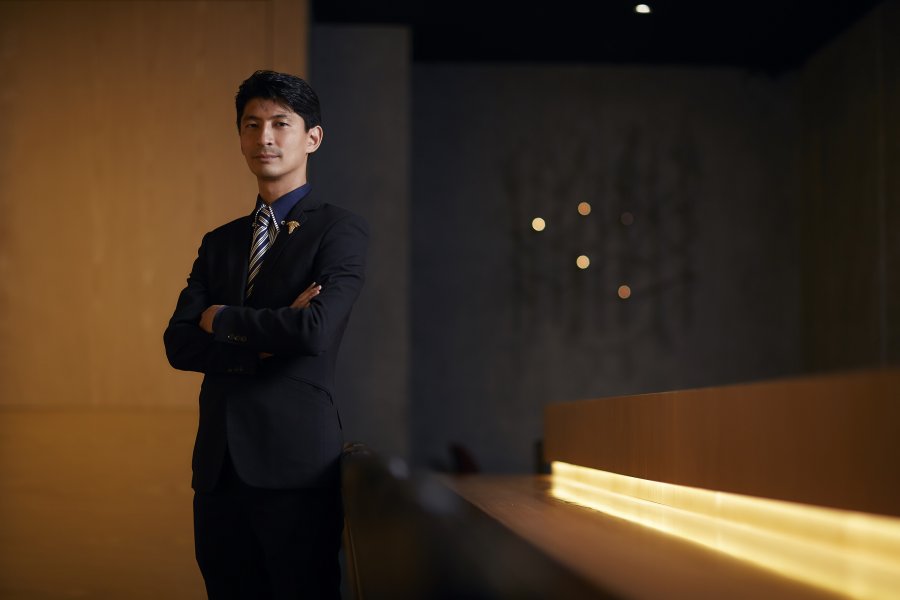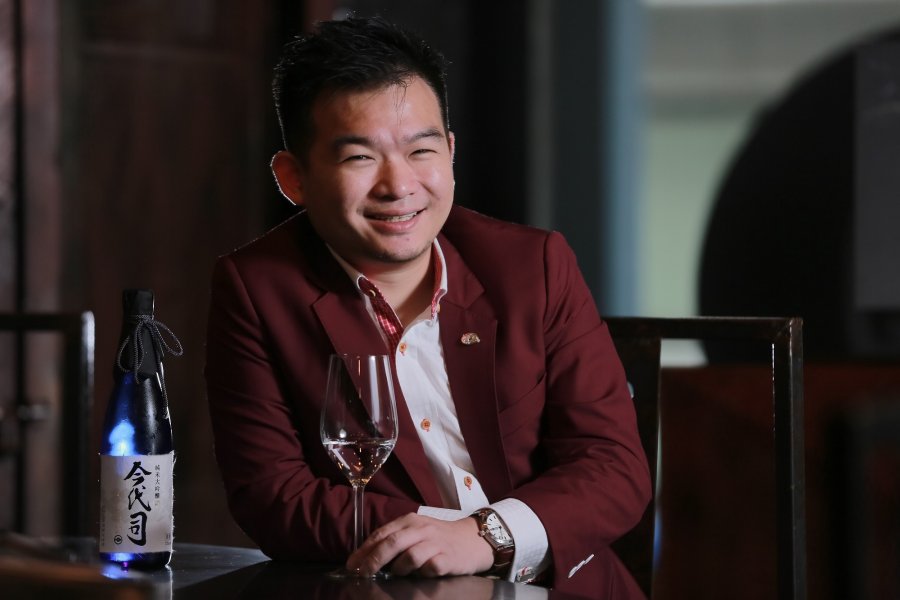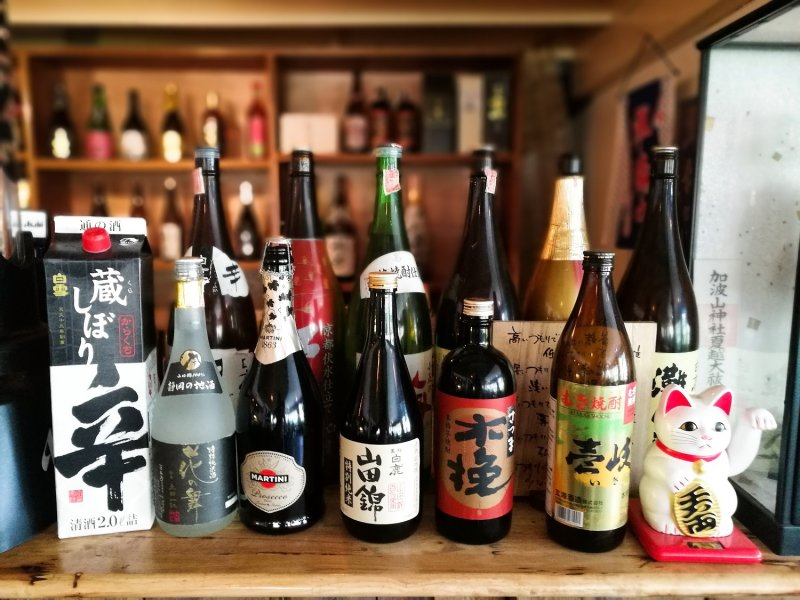Spring season ingredients in Japan and where you can try it here
Have a taste of spring without leaving Singapore
One of the ways Japanese celebrate the arrival of spring is to feast on fresh seasonal flavors. Various buds and sprouts that survived the harsh winter are harvested during this season. Sakura-like pink-fleshed seafood become available too and are both a feast for the eyes and your palate. Here are some of the best seasonal specials that you can enjoy right here in Singapore.
Advertisement
First things first, in Japan, sake refers to alcohol. What many non-Japanese think of as sake is actually nihonshu – an alcoholic fermented rice beverage – that for the record, isn’t rice wine. We chat with sake professionals about all things nihonshu.
Mind your P’s and Q’s
 Daisuke Kawai
Daisuke Kawai
We know you’ve been wondering about this, and to answer your question, yes, there is indeed sake drinking etiquette. In Japanese culture, it’s a nice gesture to pour sake for the people you're with. Drinking sake with someone is very much about nurturing that relationship, says Daisuke Kawai, Chief Sommelier and Co-founder of La Terre.
Context is important
There isn’t a one size fits all answer when it comes to sake. Maria Luisa Satoh, Sake Sommelier/Senior Sales and Marketing Manager of Orihara, explains: In Japan, they always consider the situation, food, and season, when deciding on the type of ochoko (cups), tokkuri (flask) and temperature to serve sake.
For example, when in a traditional sushi restaurant, Kawai prefers glass ochoko and tokkuri for chilled sake, and ceramic ochoko and tokkuri for warm sake. However, if he’s in a modern Japanese establishment, he opts for wine glasses instead.
 Adrian Goh
Adrian Goh
Interestingly, Makoto Iwabuchi, Ki-sho’s Master Sake Sommelier, always uses non-traditional wine glasses to serve nihonshu. Meanwhile, Adrian Goh, Sake Sommelier/Marketing Director of Inter Rice Asia, is a champion of sake being served in wine glasses. Modern sake has diverse and interesting aromas. Using wine glasses allows the consumer to appreciate the complex aromas more easily.
Some like it hot
According to Goh, different sake styles suit different temperatures. If you aren’t sure, the easiest thing to do is to refer to the brewer’s recommendation on the back label of the bottle. His rule of thumb: Light, aromatic sake like ginjo is better chilled (around 11-15 degrees Celsius), while sake with more acidity and body like junmai tend to fare better between 16-20 degrees Celsius.
Choices, choices, choices
 Different types of sake
Different types of sake
Don’t feel intimidated by the numerous sake options out there. To get you started, Kawai offers some advice if you’re usually more of a wine drinker. Like Riesling? Then try junmai gingo as it tends to be fruit-forward and floral with a banana-like aroma. Into bold Australian Shiraz? Give genshu a shot. It has a stronger flavor and punch, thanks to its higher alcohol percentage (about 16-19%). Fancy natural wines? Pick a namazake. This unpasteurized style of sake usually has a raw quality to it yet still has a smooth, soft mouthfeel.
Be adventurous
Pairing Japanese food with sake may be the norm, but don’t be afraid to experiment. Iwabuchi suggests ginjo with fresh cheese like mozzarella as the fruity element of ginjo balances the cheese’s lightness, while strong-tasting, hard cheese enhances the umami quality of yamahai sake’s rich, complex flavor.
Goh feels that aromatic junmai daiginjo works well with white fish, scallops, green salads, and prosciutto melon; refreshing honjozo pairs nicely with sashimi, tofu, yakitori, prawns, dumplings, and wanton mee; rich junmai complements red meat dishes, bouillabaisse, and squid ink pasta; aged sake matches with broiled eel, foie gras, peking duck, and even tandoori chicken.
Advertisement
There may be a myriad of top-notch chefs from Japan who have set up shop here in Singapore, but some of them have clearly managed to stand head and shoulders above the rest. While some were already renowned before coming to our shores, others gained a loyal following through sheer proof of their culinary chops. Here are the names of some who have earned their accolades.

Tetsuya Wakuda, chef at Marina Bay Sands’ hot ticket Japanese restaurant Waku Ghin, is best known for his world famous namesake establishment Tetsuya in Sydney. He first arrived in the Australian city from Hamamatsu — a town in Honshu in the Shizuoka prefecture — at the age of 22. He got a job at eatery Fishwives in Surry Hills and soon fell in love with the food and the country. Slowly working his way up, he eventually became one of the best known chefs Down Under. He then opened Waku Ghin here in 2010, which won a star in Singapore's first-ever Michelin guide in July 2016.
Kenjiro Hashida of Hashida Sushi Singapore

Kenjiro Hashida (fondly known as Hatch) helms the kitchen of omakase fine dining establishment Hashida Sushi Singapore, which has recently undergone a relocation and facelift. Hatch, having trained under his father who is one of Japan’s master sushi chefs, begin his training as soon as he was old enough to step into the restaurant at age 12. He recalls his father training his palate by constantly having surprise blind tastings with a little monetary reward given if Hatch guessed the food correctly. After deciding to further his career as a sushi chef, he worked tirelessly alongside his father full-time. Despite many offers to set up shop in USA and Shanghai, he chose Singapore for its exciting mix of cultures and a robust dining scene.
Asai Masashi of Bincho at Hua Bee

Helming the space made famous by filmmaker Eric Khoo's Mee Pok Man (1995) is Asai Masashi, the mastermind behind Bincho at Hua Bee. He moved to Singapore 14 years ago looking for new experiences, after training at the well-known Abeno Tsuji Culinary Institute and having worked at establishments in Hyogo, Osaka and Kyoto. Masashi’s cooking style here is influenced heavily from growing up in the Hyogo Prefecture, an area known for quality produce. That is why the cuisine at Bincho has a light touch and avoids heavy seasoning to allow the natural flavor of food to shine.

It’s not surprising how Kazuhiro Hamamoto got onto the food scene, especially since he’s been religiously following the Japanese television cooking show Iron Chef, produced by Fuji Television, since he was 12 years old. Naturally, he started working at a Japanese restaurant in his teenage years and enrolled himself to Kyoto’s culinary arts college at 17. There, he worked at various high-end establishments before deciding to hit the international culinary scene to broaden his skills and experience, and has since been in Singapore for the past eight years. He moved here because he landed himself a job at the prestigious Waku Ghin before helming Ki-Sho. Equipped with the skills and knowledge of Kyoto cuisine, he instils his own personal touches in terms of taste and presentation to make them truly unique to Ki-Sho.

Hal Yamashita was born in a port city in Kobe. The confluence of cultures in his hometown meant Yamashita was exposed to spices, scents and food produce from all over the world. From a young age, he enjoyed tasting new food and recreating dishes for himself. His early exposure to global influences helped him develop a distinct brand of nouvelle Japanese cuisine. He now helms numerous award winning restaurants including Nadaban Dining in Kobe and Hal Yamashita in Tokyo, and of course Syun, located at Singapore’s Resorts World Sentosa. Here, his dishes still focus on seasonal produce sourced near his hometown such as from Awaji Island and Tanba.
Advertisement
There is no dearth of Japanese celebrity chefs in Singapore, but so beloved is the cuisine to the Lion City, even locals are taking up the cause. Among Singapore most popular Japanese restaurants are a handful started by Singaporeans—can you think of any? Here we profile the local heros behind some of our favorite places.

Purveyor of delicious pork burgers on Circular Road since 2014, since before they became so ubiquitous in Singapore, Dojo is a mecca for the pork-obsessed who are also on a budget. Over a dozen pork-heavy burgers aside, Dojo also serves Japanese-style rice bowls and contemporary fusion fare like seaweed fries. And who better to helm it all than restaurant founder Janice Tan, whose love of pork comes from her family. Her grandfather is a pig farmer, her father is a real foodie and her mother is a great cook. They helped her learn to handle and prepare pork. She’s now an analytical cook who takes special care to enhance the sweetness of the dishes at Dojo. All sauces and marinades are made from scratch, in-house.

Aaron Yeo and Clarence Yau of Waa Cow!
Once a fixture on NUS’s Kent Ridge campus, the 60-seat Waa Cow! Now at Stephen Riady Centre is still beloved for its industrial-chic décor and it’s affordable poke bowls, superfood salads and more. Behind this enterprise are Aaron Yeo and Clarence Lau, who found their passion for the food business early. They ran a café at Singapore Management University (SMU) while completing their undergrad degrees. Despite brief stints in the corporate sector, they found their way back to F&B. They also founded artisanal kaya company Social Food Co. and started Japanese venture Waa Cow. When not at work making food, the guys behind Waa Cow! also do a good amount of eating out and are ever ready with restaurant recommendations. They recommend Shiraishi, a pioneer in the local Japanese food scene. Yeo says, “ Shiraishi was there long before the superstars like Hashida came to Singapore, and that was where I got my first omakase experience. It blew my mind.” They also like the chirashi don lunch set at Aoki.
Like what you see? The Bite! Japan website and Facebook page are both packed with Singapore's best places to try Japanese food, the best of Japanese sake, whisky and craft beer, upcoming promotions and lots more. Follow us!

The sexy new opening behind Amoy Street is as well regarded for its food as it is for its date night vibes. The charred corn, uni, dehydrated soy and chive dish has got to be one of the best things we have tasted in the past few months. And the man behind it is Singaporean chef Jeremmy Chiam, who also has a two-year stint at the acclaimed Iggy’s under his belt. The fine dining temple taught him an appreciation for French-Japanese cuisine, where modern cooking techniques are used to highlight the beauty of Japanese ingredients. This is what he tries to bring across at Le Binchotan. “ I go for simplicity,” he says. “ The maximum number of components in any of my dishes is three or four as I prefer to let the ingredients speak for themselves.”

The word kanshoku means “ to finish eating every last bit of your food” in Japanese. And that’s exactly what you’ll want to do at this ramen bar by Melvin Ang. Put aside all expectations, and get ready for some amazing twists on everyone’s favorite Japanese comfort food: black garlic, truffle, to name just a couple. But that doesn’t mean there isn’t deep traditional knowledge behind every bowl. When deciding to make a career switch into F&B, Ang—who was completely untrained as a chef—figured that while making ramen is a long process, taking over 12 hours, it is also one that he could master. That’s how he decided to master the dish, putting months into travelling, researching and learning from various chefs, before heading into the kitchen himself. While Kanshoku breaks conformity with its different flavors, Melvin is extremely meticulous about the process. He puts in the hours, uses the best imported ingredients and has no qualms about investing in a costly ramen-noodle making machine to ensure utmost quality. The result is a beloved and slowly growing empire.

A beloved place for super porky ramen in the CBD, Buta Ramen offers plenty of decadent twists—the sous-vide teriyaki glazed ribs aside, the most popular dish is the Spicy Chilli Boss Rib Ramen, followed by the creative Beer Belly Ramen, where the already rich tonkotsu broth gets a kick of beer. The inventive dude-food chef behind the menu here are co-founders John Ng and Sandy Yeo, who first started out as multimedia designers. But their love for meat prevailed, and they decided to pursue the food business. They started to brainstorm potential opportunities for starting their own empire, involving a creative and visionary take on a dish. This was where the concept of ramen and ribs was born. Sandy is adamant on value for customers, and ensures that portions are generous. Besides the special element of ribs, Sandy has tailored the ramen flavors to suit the local Singapore palate: the broth is less salty than its traditional counterpart, and side dishes like the grilled kakuni buns prove to be a hit with locals, as they are very much like Singapore’s very own kong bak pau.
Advertisement